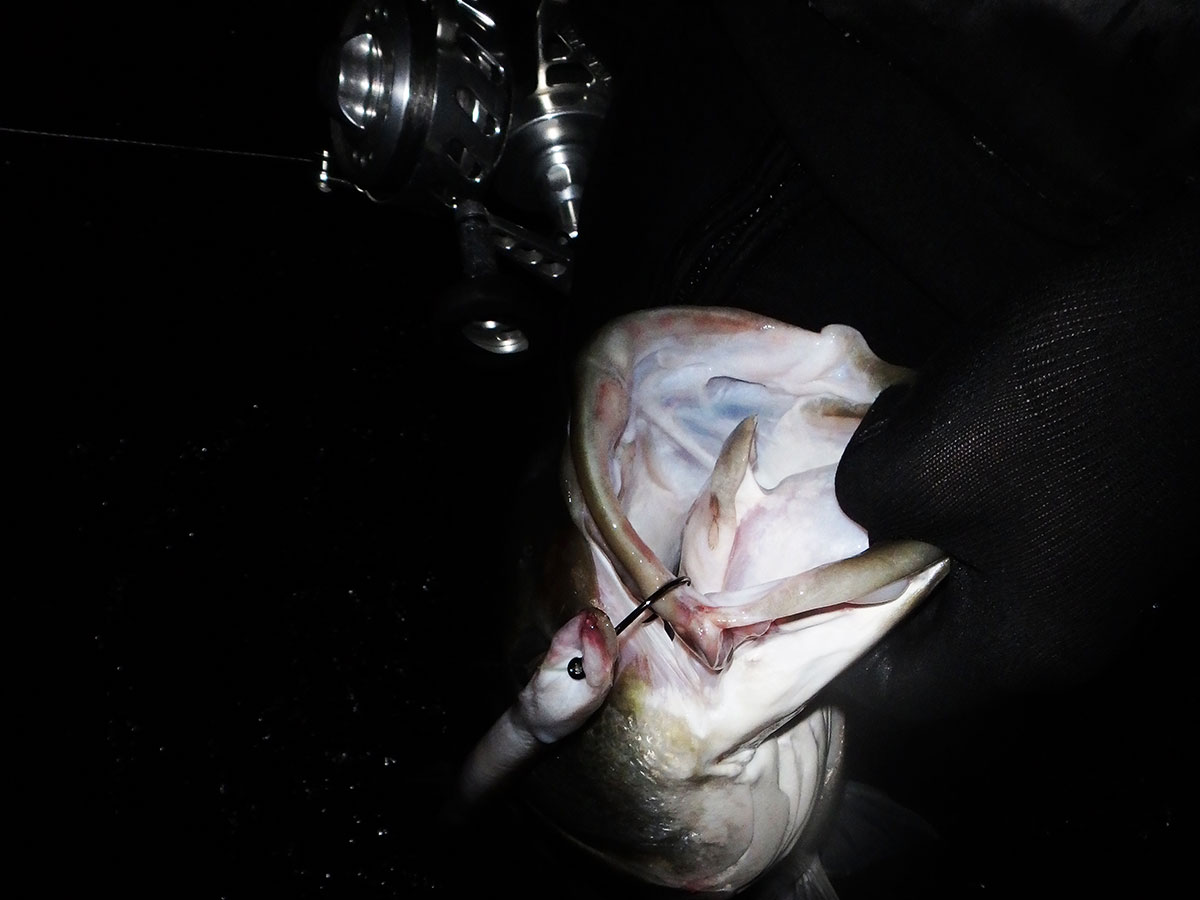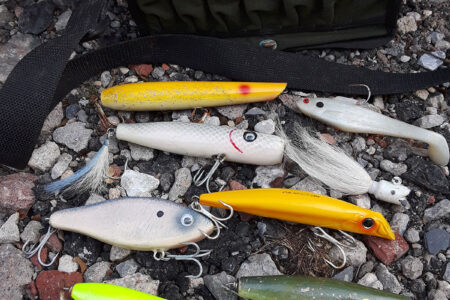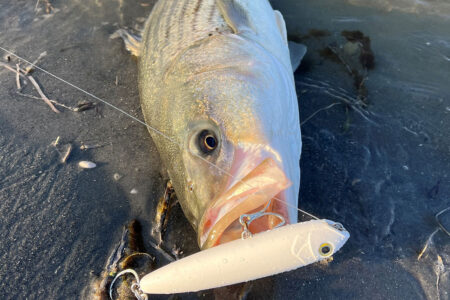Find a way to put an unexpected bad wind to your advantage in the surf.
Wind speed and direction are a large piece of the puzzle when I decide whether or not to fish on a given night as well as where to go once the choice has been made to go fishing. Once on the water, wind speed and direction also play into what I throw, how I fish and where I stand and place my casts.
A few weeks back I checked the wind prediction and saw that we were supposed to get a hard blow out of the east/northeast. Combining this wind with the latter stages of the dropping tide often produced positive results at one of my spots, so I packed my gear and set out for the late tide. Arriving at the water, things were not quite what I had anticipated as that northeast wind was actually building out of the west/northwest. With the wind quartering over my right shoulder around 5-plus mph, I began with a 13-inch GT Eel on a 1/2-ounce homemade swimbait jig. It didn’t take long for me to realize that while the lure was heavy enough to tick bottom on the retrieve as I like it to do, the wind put a bit of a bow in my line, which was making things difficult. On my third cast I had a solid hit, set up and only had the fish on for a few seconds before it popped off. In all likelihood I wasn’t able to get a good hookset due to the bow and it allowed the fish to throw the hook when it blew up on the surface. I took a few more casts without any more signs of life and decided to move down the beach 100 feet or so to my left.

At my next stop I waded out to the end of a point that juts right into the current towards a small rip line. The first cast produced a bass of 35 pounds, hooked almost at my feet, so with the short leash there was little bow in the line and I had no problems setting the hook. The wind began to increase, pushing its way closer to 15, and I was having real difficulty in keeping good contact with my lure. I knew there were fish here, so I switched to a live eel.
After changing to an eel leader, I pushed the 6/0 Gamakatsu 4X inline circle hook up through the eel’s chin and out an eye socket and pitched it a short ways off my rock. I was able to keep my rod tip lower to the water and to my side, basically out of the wind, yet still keep in good contact with the eel. My idea here was that when a fish would strike I wouldn’t need to “set” the circle hook since I could simply swing the rod towards the fish and let it hook itself once the line came tight, something that had worked for me in the past in similar scenarios. The first few casts didn’t produce much, but once I put the wind to good use and bombed a long cast above the rip in front of me, I quickly hooked into another bass of 34 pounds. The next few casts produced a hard bump but nothing else; the wind was increasing and my attempts to keep the rod and line out of the wind failed thereby producing that big bow once again. I decided to move back towards the first rock where I had dropped the earlier fish as the wind would help me bomb a cast well up to where I had just landed the fish.
Atop my original rock the wind helped my casts cover more distance, landing right atop the rip, and with the current coming directly at me all I had to do was slowly reel in the line and I could stay in solid contact with the eel. It took me a little while to get back on the fish, but once I did I added four more bass of 31, 35, 38 and 41 pounds to my night’s catch before the current changed direction and the bite ended.
This example is not so much about what I caught, but more so about how I used the wind to my advantage once I got on the water. So many times I have set out anticipating a certain combination of conditions, only to find out that the predictions were incorrect. Had I given up on this night, as opposed to finding ways to use the wind, then I would have come away with a much different feeling on the night’s success.



